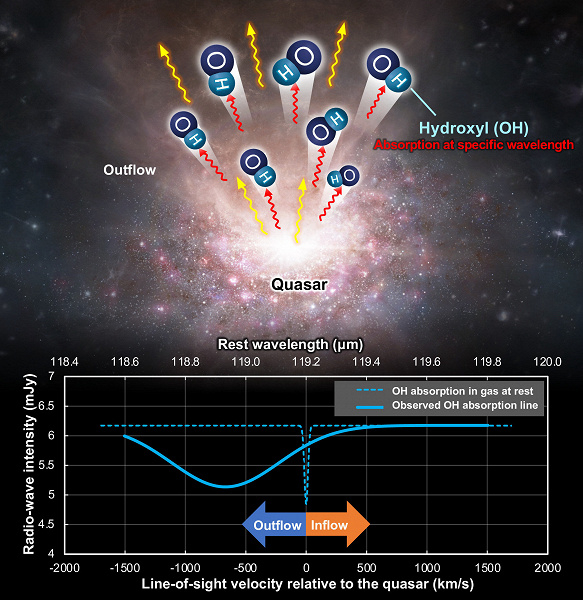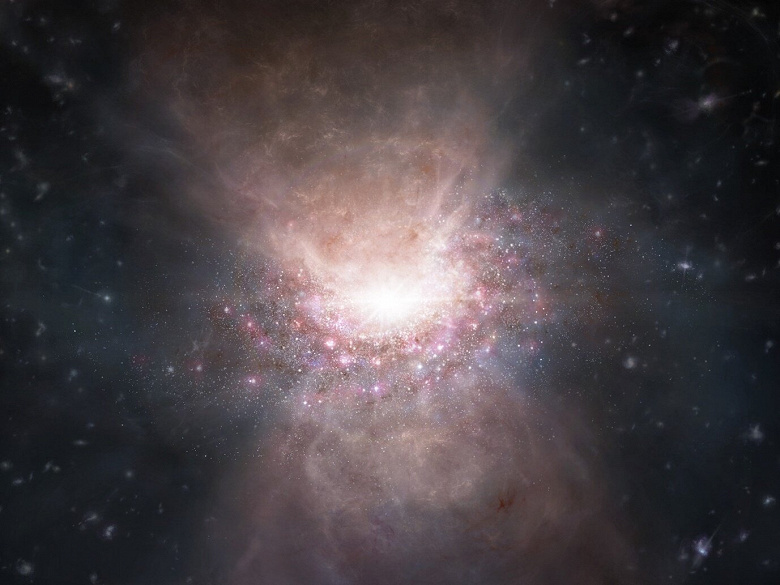ALMA helped us see how quasars suppress the birth of stars in the early stages of the Universe
A new study conducted by a team of scientists using the Atacama Large Millimeter Array (ALMA) radio telescope complex has led to the discovery of the shadow of a molecular outflow from a quasar that occurred less than 1 billion years later after the Big Bang.
Quasars – These are hyperactive, supermassive black holes that reside at the center of galaxies. They get their energy from the accretion disks surrounding these black holes and are considered to be among the brightest objects in the Universe. Because of their intensity, they can help study the state of the early Universe, namely when it was less than 1 billion years old.
These quasars were previously thought to have little effect on star formation, as they are known to emit powerful, hot winds, blowing up the gas around them. But now scientists have found the first evidence that these powerful outflows may be suppressing star formation in galaxies inhabited by quasars living in the early Universe.
Molecular gas plays a crucial role in the formation of stars, so its presence should lead to active star formation. But by ejecting this gas into the space between galaxies, quasars actively suppress star formation.
Researchers used ALMA to observe the shadow of a molecular outflow from a quasar known as J2054-0005, which has a very high redshift and is very far from Earth.

«J2054-0005 is one of the brightest quasars in the distant Universe, and we decided to study it,” explains Associate Professor Dragan Salaka, one of the scientists who took part in the study.
ALMA, due to its high sensitivity and wide frequency range, played a major role in this study. Using ALMA's antennas, scientists detected the shadows of escaping molecular gas from a quasar. Instead of observing the gas itself, scientists studied the emission from the quasar, and it was its luminosity that helped reveal the shadows created by the winds blown by the quasar.
The results of this study provide the first convincing evidence that powerful outflows of molecular gas from quasar host galaxies exist and influence the evolution of galaxies in the early Universe.
«Molecular gas – it is a key element of galaxies as it is “fuel” for star formation. Our results show that quasars can suppress star formation in host galaxies by getting rid of molecular gas,” Salaka concludes.
This discovery provides more insight into the relationship between the dynamics and concentration of molecular gas in a galaxy and the process of star formation. Research in this area will help expand knowledge of the early Universe and contribute to further understanding of the evolution of galaxies.

